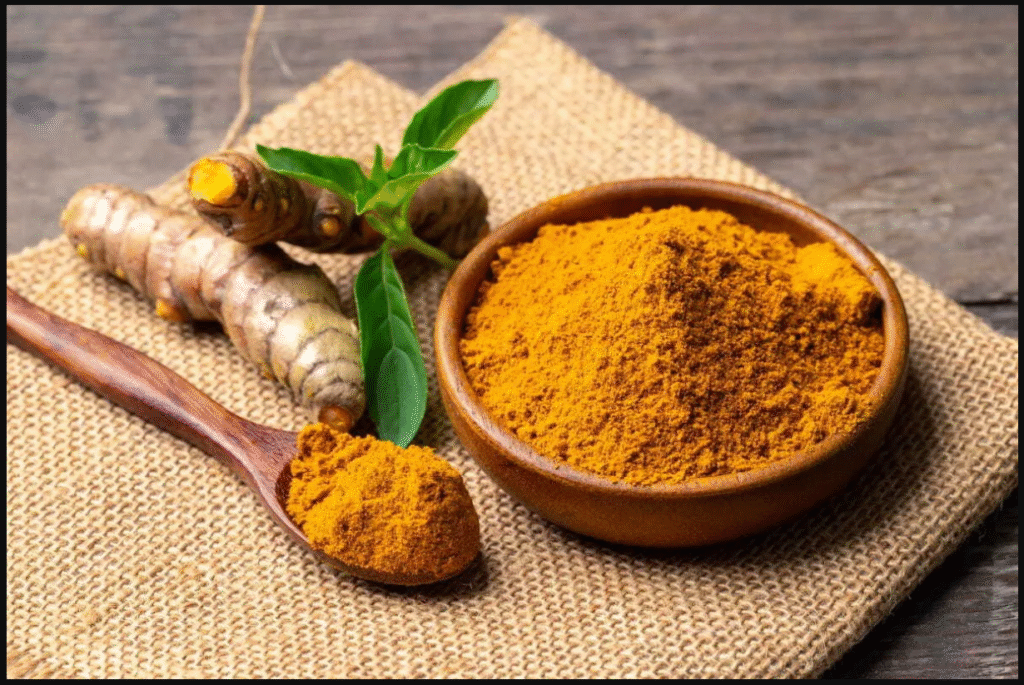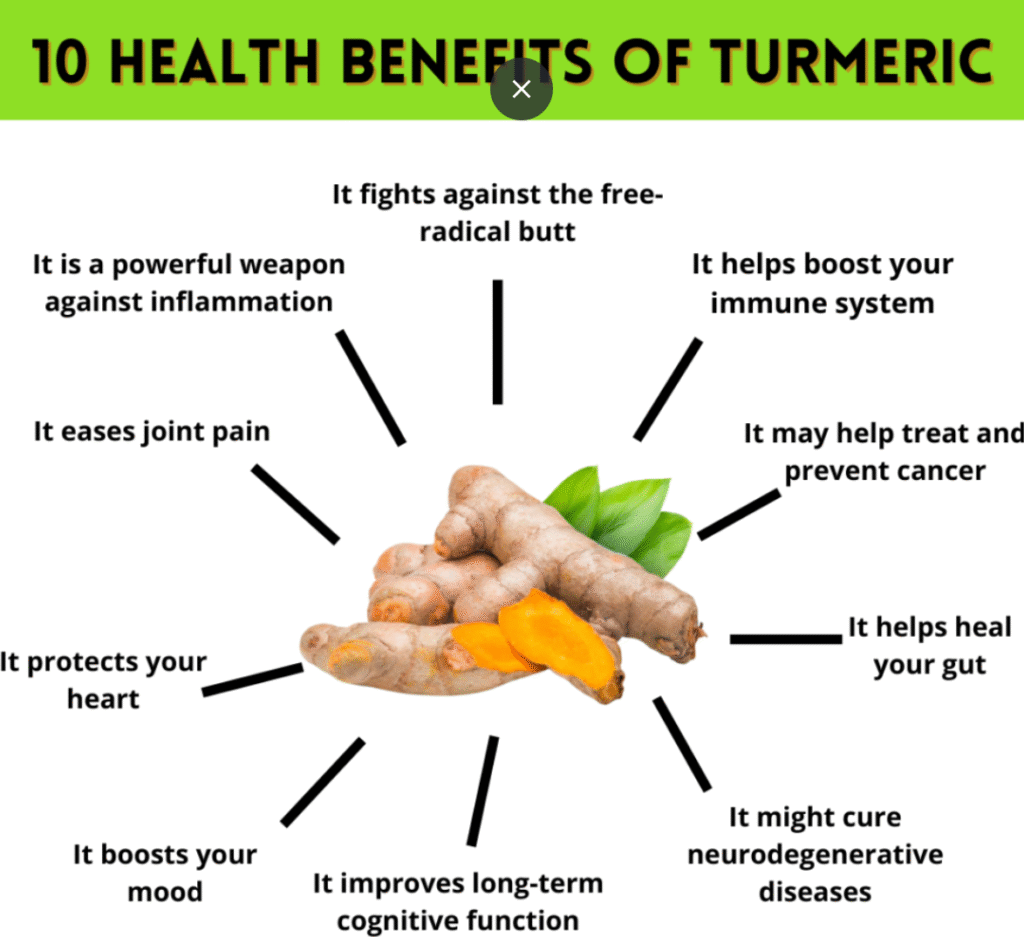
We are familiar with Turmeric and where we use it. We will surely see changes in your body in a healthy way. Turmeric is yellow and adds flavor to your dish, and gives you many health benefits that improve your life in many ways.
Who does not like eating food, as it is very important to live? Without eating food, you cannot live a long life. It is seen that there are many ingredients used in making a dish, and Turmeric is a part of it. Turmeric adds color and flavor to your dish, and with that, it also provides you with many health benefits and improves your health. Has its key component, which helps you gain benefits, and you must read ahead for understanding about its various benefits and the way of its consumption.
Information about Turmeric
Turmeric – a common spice that surely uplifts the look and taste when you add it to your dishes. It is derived from the Curcuma Longa Plant, which is a part of the ginger family, and has its own scent. Curcuma Longa Plants, which are found in warm climates throughout the world, contain the main ingredient, Curcumin. Curcumin enhances the look of your dish by adding a bright yellow color to it, and you will also see that it has antioxidants and anti-inflammatory properties.
Turmeric contains countless essentials, which are health boosters like Vitamin C, Zinc, copper, Vitamin B6, iron, and many more, and it is used in many traditional medicines. As the study shows, Turmeric controls cholesterol, is simply helpful in healing wounds, helps in fighting body pain, and even helps you fight cancer. Turmeric is easily available in the market, or you can buy its fresh roots, and you can store them in airtight containers in your refrigerator. You can gain many health benefits for sure, and read ahead to know them.
Turmeric Benefits
It is seen that Turmeric is a powerful and anti-inflammatory ingredient which surely gives you many health benefits, and let us discuss some of the benefits:-
- Contains Anti-inflammatory Properties:- Turmeric is filled with anti-inflammatory properties, which help in reducing the problem of inflammation. It solves the problem of arthritis and heart problems.
- Contains Antioxidant Properties:- Turmeric contains antioxidant properties, which help in neutralizing free radicals and solve skin issues and even aging. It surely releases all the oxidative stress from your body.
- Helps in Depression Management:- It fights depression and boosts your mood as it is an effective antidepressant. It increases the level of dopamine and serotonin in your body.
- Supports your Weight:- It cuts down all the unwanted fat of your body and uplifts your metabolism level.
- Improves Digestion:- Turmeric improves your digestion and works as a healing agent for your digestive system. Helps in reducing the problem of inflammation.
- Improves your Memory:- It reduces the problem of Alzheimer’s, and simply improves your memory power. It improves your brain functioning.
- Improves your Liver Function:- Turmeric detoxifies your body from inside and improves the working of your liver. It helps in preventing fatty liver and simply cuts all the toxins from your body.
- Prevents Cancer:- Turmeric is helpful in Cancer Risk Reduction by reducing bacteria cells throughout your body. Fights against cancerous cells.
- Improve your Heart Health:- It has the ability to reduce the problem of inflammation, which reduces the chances of heart problems.
- Reduces Menstrual Pain:- Gives relief from menstrual cramps as it is a natural remedy, and it improves your blood circulation. It promotes relaxation of your uterine muscles, and you will feel better.
What is an appropriate quantity of Turmeric that you can consume?
Totally depends on your health on how much turmeric you can consume every day. It is seen that taking 8 grams of Turmeric is safe for you. You must discuss it with your doctor if you are taking any supplements daily, as it helps you understand more about its quantity, so that it will not harm your body.
How to Consume Turmeric?
As we all know, Turmeric is very versatile and can be consumed in any way by adding it to your meals. Let us read some of the ways you can consume them:-
You can drink Turmeric Water:-
- You can drink Turmeric water in the morning after having your breakfast and at night before sleeping, which gives you maximum benefits.
- You can take 1 spoon of turmeric powder, 1 spoon of honey or lemon (as per your choice), and 1 glass of water.
- You simply boil a glass of water in a pan and then add turmeric to it, and when it gets boiled properly, you need to put that in a glass and let it cool down. You need to put honey or lemon, and after that, you can consume it.
- You can add Turmeric to your tea, milk, and other products.
Add in Foods
- You need to add 1 tablespoon to your curries, sauces, and more
- You can add them to your marinade items
- You can add to your salad with oil, Turmeric, vinegar, and more
You will surely gain countless benefits from the usage of Turmeric, and you can add it to your dishes and improve your health from the inside out.
Final Verdict
Turmeric has a main ingredient – Curcumin, which is designed to give you countless health benefits. It helps in improving your heart health, digestive power, and memory, also. It has anti-inflammatory and antioxidant properties that fight depression and even cancer safely. It boosts your overall health and makes you healthy from the inside.

Frequently Asked Questions
- Does Turmeric give you skin benefits?
An. Yes, it surely gives you many skin benefits by reducing acne, aging effects, and more.
- Do you think Turmeric reduces Joint pain?
Ans. Turmeric reduces the problem of arthritis, joint pain, and swelling.
- How powerful is taking Turmeric?
Ans. Turmeric is very powerful and boosts your health.
- What is the correct timing to take Turmeric?
Ans. In the Morning.
- Name the Vitamins present in Turmeric?
Ans. Vitamin B6 and Vitamin C.
Disclaimer & Copyright
The content on AmericanPainSociety.org is provided for general informational purposes only and should not replace professional medical advice, diagnosis, or treatment. We make no guarantees of accuracy, completeness, or timeliness. Users rely on the information at their own risk. Always consult qualified professionals for healthcare decisions.
© 2025 American Pain Society. All rights reserved. No part of this website may be reproduced, distributed, or transmitted in any form or by any means without prior written permission.
